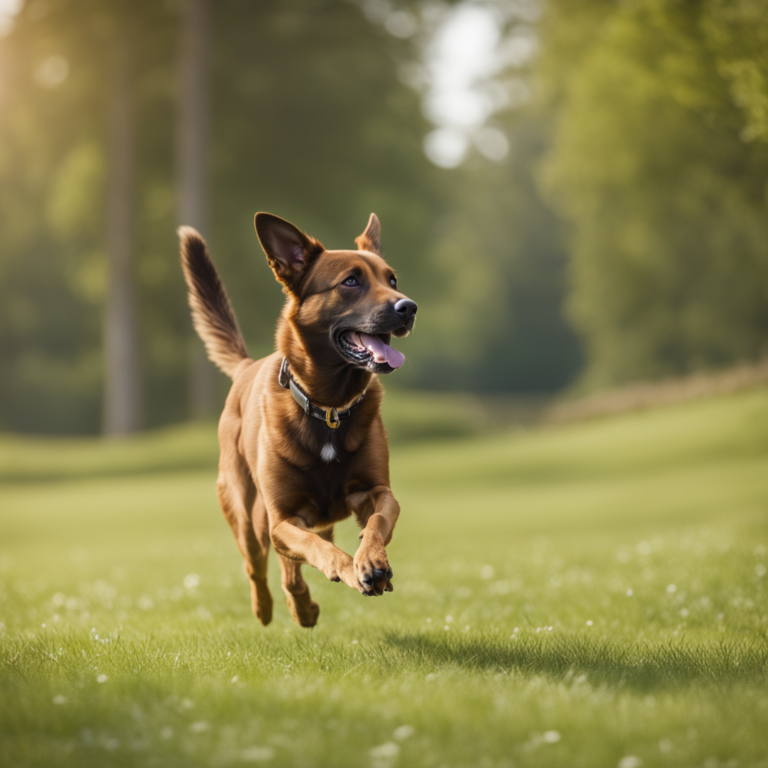How Long It Takes To Train A Dog
Training a furry companion can be a rewarding experience, but many pet owners wonder: how long does it take to train a dog? The answer isn’t one-size-fits-all, as factors such as breed, age, and individual personality can influence the process. In this blog post, we’ll explore the various factors that determine the duration of dog training and provide tips to help make the journey smoother. Remember, the key to success is consistency and patience. So, let’s dive in and discover how to transform a pup into a well-behaved companion.
Factors Affecting How Long It Takes To Train A Dog
Training a dog can be a rewarding and fulfilling experience, but it also requires a significant investment of time and effort. The length of time it takes to train a dog can vary depending on several factors, including:
Dog Breed
Different dog breeds have different temperaments, personalities, and learning abilities. Some breeds are naturally more obedient and easier to train than others. For instance, a Golden Retriever may learn commands more quickly than a Beagle due to its eagerness to please and high intelligence. On the other hand, a Beagle may be more challenging to train due to its stubbornness and tendency to follow its nose.
Age of the Dog
The age of the dog can also affect how long it takes to train them. Puppies have a shorter attention span and are more easily distracted, so training sessions should be shorter and more frequent. Adult dogs, on the other hand, may have already developed bad habits or behaviors that need to be unlearned before they can be trained in new behaviors.
Previous Training and Behavior
If a dog has received previous training, it can affect how long it takes to train them in new behaviors. A dog that has already learned basic obedience commands may progress more quickly than a dog that has never been trained before. Similarly, a dog with behavioral issues, such as aggression or anxiety, may require more time and specialized training to overcome these issues before they can learn new behaviors.
Owner’s Commitment and Consistency
The owner’s commitment and consistency play a crucial role in how long it takes to train a dog. Consistent training sessions are essential for reinforcing behaviors and preventing the dog from becoming confused or frustrated. Additionally, training should be conducted in a positive and supportive environment, with rewards and praise given for good behavior.
Type of Training Method Used
The type of training method used can also affect how long it takes to train a dog. Positive reinforcement training, which rewards good behavior, tends to be more effective and faster than punishment-based training, which can cause anxiety and fear in the dog. Additionally, some dogs may respond better to certain types of training, such as clicker training, agility training, or obedience training.
——————————-
Get access to the best pet discounts, items, and training by clicking the link below
————————————-
Basic Obedience Training Timeline
One of the most important aspects of being a responsible dog owner is ensuring that your dog is well-trained in basic obedience. The timeline for training a dog can vary depending on factors such as breed, age, and individual temperament. However, some general guidelines can be followed to ensure success. Here, we’ll break down the timeline for basic obedience training, including the sit command, stay command, come command, down command, and heel command.
Sit Command
The sit command is one of the easiest commands to teach your dog, and it’s also one of the most useful. Begin by holding a treat close to your dog’s nose and then move it slowly up and back over its head. As they follow the treat with their eyes, their bottom should automatically lower to the ground. As soon as they sit, give them the treat and praise them. Repeat this process several times a day for a few weeks until they can sit on command without the treat.
Stay Command
The stay command can be more challenging for some dogs, as it requires them to remain in one spot for an extended period. Start by giving your dog the sit command, and then hold your hand up, palm out, and say “Stay.” Take a step back, and if they remain in place, reward them with praise and a treat. Gradually increase the distance and duration of the stay command, and always reward them for a job well done.
Come Command
The come command is essential for keeping your dog safe and under control. Begin by calling your dog’s name and then saying “Come” in a friendly, confident tone. If they come to you, reward them with praise and a treat. If they don’t come, don’t punish them, but instead, go to them and try again. Repeat this process daily until they come to you reliably on command.
Down Command
The down command is another useful command for controlling your dog’s behavior. Start by giving your dog the sit command, and then place a treat in front of its nose. Slowly lower the treat to the ground, and as they follow it, their body should follow suit, ending in a down position. As soon as they’re in position, give them the treat and praise them. Repeat this process daily until they can lie down on command without the treat.
Heel Command
The heel command is important for walking your dog safely and without pulling. Begin by attaching a leash to your dog’s collar and standing at its side. Say “heel” and start walking, rewarding them with praise and treats when they stay by your side. If they pull or stray, stop walking, say “no,” and wait for them to come back to your side before starting again. Repeat this process daily until they can walk calmly by your side on command.
Advanced Training Timeline for Dogs
If you are looking to take your dog’s training to the next level, there are several advanced training options available. The timeline for advanced training will vary depending on the type of training and your dog’s progress. Here are a few examples of advanced training and their respective timelines:
Agility Training
Agility training is a fun and challenging way to improve your dog’s physical abilities, obedience, and confidence. The training involves navigating through a course of obstacles such as tunnels, jumps, and weave poles.
To begin, your dog should have a good foundation in basic obedience training. The timeline for agility training can vary depending on your dog’s age, breed, and ability. However, it typically takes around six months to a year to achieve a basic level of proficiency in agility.
Protection Training
Protection training is designed to teach your dog how to protect you and your property. This type of training involves teaching your dog how to bark on command, bite on command, and release on command.
Protection training should only be attempted by experienced trainers as it can be dangerous if not done correctly. The timeline for protection training can take anywhere from six months to two years depending on your dog’s temperament and ability.
Hunting Training
Hunting training is a great way to improve your dog’s natural instincts and abilities. This type of training involves teaching your dog how to retrieve games, track scents, and obey commands while in the field.
The timeline for hunting training can vary depending on the type of hunting and your dog’s ability. However, it typically takes around six months to a year to achieve a basic level of proficiency in hunting training.
——————————-
Get access to the best pet discounts, items, and training by clicking the link below
————————————-
Special cases
Training a dog can be a challenging task, and it becomes even more challenging when it comes to special cases. Special cases refer to those dogs that require additional training or those that have some behavioral issues. In this section, we’ll discuss three types of special cases – service dog training, behavioral issues training, and training older dogs.
Service dog training
Service dogs are trained to assist people with disabilities. These dogs go through extensive training to perform tasks that their owners cannot perform themselves. Examples of these tasks include guiding the visually impaired, alerting the hearing impaired, and providing assistance to those with mobility issues.
Training a service dog can take anywhere from 6 months to 2 years, depending on the dog’s breed, temperament, and the type of tasks the dog will be performing. The training process is divided into different stages, starting with basic obedience training and gradually moving toward more advanced training.
Behavioral issues training
Dogs with behavioral issues can be challenging to train, but it’s not impossible. The most common behavioral issues include aggression, anxiety, fear, and excessive barking. These issues can be caused by a variety of factors, including lack of socialization, trauma, and genetics.
Training a dog with behavioral issues requires a lot of patience and consistency. The first step is to identify the cause of the behavior and address it accordingly. It’s also important to use positive reinforcement techniques and avoid punishment-based training.
Dealing with older dogs
Training an older dog can be a bit more challenging than training a younger dog. Older dogs may have developed certain habits that are difficult to break, and they may also have health issues that need to be taken into consideration.
The key to training an older dog is to be patient and consistent. It’s important to start with basic obedience training and gradually move towards more advanced training. It’s also important to take the dog’s health into consideration and adjust the training accordingly.
Conclusion
Training a dog can be a challenging task, but with patience and consistency, it can be accomplished. The length of time it takes to train a dog depends on various factors, such as the breed, age, and temperament of the dog, as well as the training techniques used. However, it is important to remember that training should be a positive experience for both the dog and the owner.
Whether you are trying to teach basic obedience or advanced tricks, the key is to be consistent with your training and to provide positive reinforcement for good behavior. Remember to keep training sessions short and to always end on a positive note. With time and effort, your furry friend will become a well-behaved and obedient companion.
——————————-
Get access to the best pet discounts, items, and training by clicking the link below
————————————-
FAQ:
Training a dog can be a daunting task, especially if you are a new pet owner. You may have several questions about the process, and we are here to answer them for you. Below are some of the frequently asked questions about dog training:
How long does it take to train a dog?
The length of time it takes to train a dog varies depending on several factors. The dog’s breed, age, temperament, and history of training can all affect the speed of training. On average, it takes about six months to train a dog thoroughly. However, some dogs may take longer, while others may take less time.
How often should I train my dog?
Consistency is key when it comes to dog training. You should aim to train your dog every day for short periods, rather than long sessions every few days. Short and frequent training sessions are more effective than infrequent and long sessions.
What are the best training methods for dogs?
There are several dog training methods, and the most effective one varies depending on the dog’s personality and temperament. Positive reinforcement training, which involves rewarding good behavior, is one of the most popular and effective training methods. Other methods include clicker training, leash and collar training, and dominance-based training. It is essential to research and choose the training method that is most suitable for your dog.
Can an old dog learn new tricks?
Yes, an old dog can learn new tricks. Dogs of all ages are capable of learning new things. However, it may take longer to train an older dog as they may have developed bad habits over time. Patience and consistency are essential when training an older dog.
What should I do if my dog is not responding to training?
If your dog is not responding to training, it may be due to several reasons. It could be that the training method is not suitable for your dog, or you may not be consistent in your training. It may also be beneficial to seek the help of a professional dog trainer who can give you personalized advice on how to train your dog effectively.
Training a dog requires patience, consistency, and dedication. With the right training methods and approach, you can have a well-trained and obedient dog in no time. If you have any more questions about dog training, feel free to contact us for more information.









